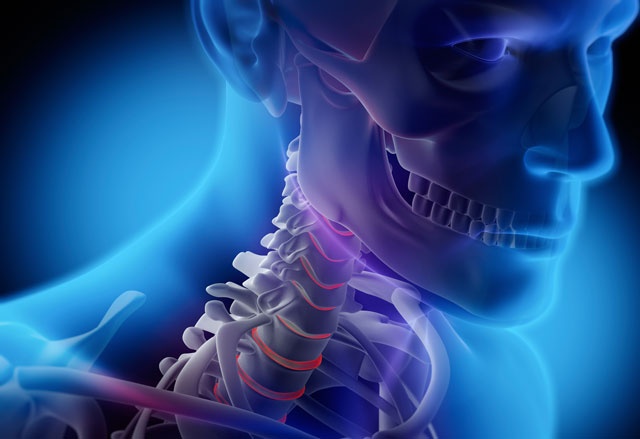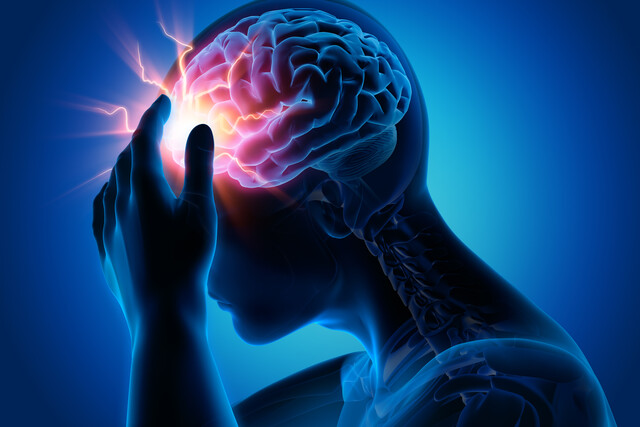Online Class: Biology 360 — From Molecules to Ecosystems

-
30Lessons
-
41Exams &
Assignments -
14Hours
average time -
1.4CEUs
Course Description
What if you could uncover the secrets of life itself-learn the intricate dance of molecules, cells, and ecosystems, and come to see the world around you with new eyes? Imagine the thrill of understanding not just how life works, but why it matters. Welcome to Biology 101, a transformative adventure into the wonders of the living world-a course designed to inspire, educate, and empower you.
Biology isn't just another subject; it's the story of life in all its glory. It's the heartbeat of medicine, the foundation of environmental science, and the key to unlocking humanity's greatest challenges and opportunities. This course isn't just about learning biology-it's about experiencing it.
From the moment you begin, you'll be drawn into a world of discovery. Together, we'll travel from the tiniest cell to the vast complexity of entire ecosystems. You'll uncover the mysteries of DNA-the blueprint of all living things-and explore the interconnectedness of life in ways that are both awe-inspiring and deeply practical.
This is not a passive learning experience. Biology 101 is designed to engage you at every step, sparking curiosity and critical thinking. We've stripped away the dryness of textbooks to create a course that is alive with vivid storytelling, rich visuals, and real-world applications. Whether you're unraveling the complexities of biochemistry or marveling at the elegance of genetic inheritance, you'll find yourself immersed in content that feels less like a lecture and more like an exploration.
What makes Biology 101 unique? It's not just the depth of knowledge-it's the personal transformation it offers. This course isn't just about facts; it's about perspective. You'll come away not only understanding biology but seeing your place in the web of life with newfound clarity and purpose.
Whether you're preparing for academic success, pursuing a career in science, or simply satisfying a thirst for knowledge, this course adapts to you. It's designed for learners of all levels, with tools that empower you to progress at your own pace and deepen your understanding at every turn.
But this isn't just an intellectual journey-it's an emotional one. Biology 101 will awaken your sense of wonder, challenge you to think critically, and inspire you to see the beauty and complexity of life all around you.
So, are you ready? Ready to unlock the mysteries of life, broaden your horizons, and ignite a lifelong passion for discovery? Biology 101 isn't just a course-it's an opportunity. An invitation. A life-changing decision.
Don't just learn biology-experience it. Join us, and let the adventure begin.
Course Motivation
Biology is the study of life in all its forms, from the origins of existence to the structure, growth, and interactions of living organisms. While its vastness can seem intimidating, this course breaks it down into clear, foundational concepts that make learning approachable and engaging.
Designed for college, pre-college students, and anyone with a curiosity about life, Biology 101 offers a self-paced, easy-to-follow curriculum supported by vivid visuals, critical thinking exercises, and comprehensive reviews. No prior scientific background is needed-just a willingness to explore!
With 24/7 enrollment and all materials included, this course is accessible and affordable, eliminating the need for costly textbooks. By the end, you'll gain a solid understanding of biology's core principles and be prepared to excel in further scientific studies or simply appreciate the science of life.
Start learning today-no prerequisites, no waiting, just discovery at your own pace.
Course Lessons
Lesson 1. Biology's Beginnings: From Ancient Rituals to Rational Inquiry
 Lesson 1 Video
Lesson 1 Video Review Practice Worksheet: Lesson-1-Downloadable-11857.pdf
Review Practice Worksheet: Lesson-1-Downloadable-11857.pdf Lesson discussions: Reasons for Taking this Course
Lesson discussions: Reasons for Taking this Course Complete Assignment: Why this Course?
Complete Assignment: Why this Course? Assessment: Introduction to the Study of Biology Exam
Assessment: Introduction to the Study of Biology Exam Assessment: Lesson 1 Review Exam
Assessment: Lesson 1 Review Exam
Lesson 2. Scientific Inquiry: Observations, Experiments, and Discoveries
 Lesson 2 Video
Lesson 2 Video Review Practice Worksheet: Lesson-2-HomeWork-11858.pdf
Review Practice Worksheet: Lesson-2-HomeWork-11858.pdf Assessment: The Scientific Method Exam
Assessment: The Scientific Method Exam Assessment: Lesson 2 Review Exam
Assessment: Lesson 2 Review Exam
Lesson 3. The Journey of Life: Understanding Cellular Foundations and Ecological Harmony
 Lesson 3 Video
Lesson 3 Video Review Practice Worksheet: Lesson-3-Activity-11859.pdf
Review Practice Worksheet: Lesson-3-Activity-11859.pdf Assessment: Characteristics of Living Things Exam
Assessment: Characteristics of Living Things Exam Assessment: Lesson 3 Review Exam
Assessment: Lesson 3 Review Exam
Lesson 4. Biology's Backbone: The Chemical Connection
 Lesson 4 Video
Lesson 4 Video Review Practice Worksheet: Lesson-4-Downloadable-11860.pdf
Review Practice Worksheet: Lesson-4-Downloadable-11860.pdf Complete: Lesson 4 Activity
Complete: Lesson 4 Activity Assessment: The Role of Chemistry in Biology Exam
Assessment: The Role of Chemistry in Biology Exam Assessment: Lesson 4 Review Exam
Assessment: Lesson 4 Review Exam
Lesson 5. Chemical Bonds and the Molecular Mosaic
 Lesson 5 Video
Lesson 5 Video Review Practice Worksheet: Lesson-5-HomeWork-11861.pdf
Review Practice Worksheet: Lesson-5-HomeWork-11861.pdf Assessment: Chemistry Basics Exam
Assessment: Chemistry Basics Exam
Lesson 6. Biochemistry Basics
 Lesson 6 Video
Lesson 6 Video Review Practice Worksheet: Lesson-6-HomeWork-11862.pdf
Review Practice Worksheet: Lesson-6-HomeWork-11862.pdf Complete: Lesson 6 Activity
Complete: Lesson 6 Activity Assessment: Biochemistry and other Bio-Sciences Exam
Assessment: Biochemistry and other Bio-Sciences Exam
Lesson 7. Cells: Life's Fundamental Units
 Lesson 7 Video
Lesson 7 Video Review Practice Worksheet: Lesson-7-WorkSheet-11863.pdf
Review Practice Worksheet: Lesson-7-WorkSheet-11863.pdf Complete: Lesson 7 Activity
Complete: Lesson 7 Activity Assessment: Comparison of Prokaryotic and Eukaryotic Cell Structures Exam
Assessment: Comparison of Prokaryotic and Eukaryotic Cell Structures Exam
Lesson 8. Photosynthesis and Cellular Respiration
 Lesson 8 Video
Lesson 8 Video Review Practice Worksheet: Lesson-8-HomeWork-11864.pdf
Review Practice Worksheet: Lesson-8-HomeWork-11864.pdf Complete: Lesson 8 Activity
Complete: Lesson 8 Activity Assessment: Energy Conversion in Eykaryotic Cells Exam
Assessment: Energy Conversion in Eykaryotic Cells Exam
Lesson 9. The Genesis of Genetic Understanding: Gregor Mendel's Pioneering Insights
 Lesson 9 Video
Lesson 9 Video Review Practice Worksheet: Lesson-9-WordSearch-11865.pdf
Review Practice Worksheet: Lesson-9-WordSearch-11865.pdf Complete: Lesson 9 Activity
Complete: Lesson 9 Activity Assessment: Mendel's Laws and Modern Genetic Terminology Exam
Assessment: Mendel's Laws and Modern Genetic Terminology Exam
Lesson 10. Mendelian Genetics and its Contemporary Relevance
 Lesson 10 Video
Lesson 10 Video Review Practice Worksheet: Lesson-10-WordSearch-11866.pdf
Review Practice Worksheet: Lesson-10-WordSearch-11866.pdf Complete: Lesson 10 Activity
Complete: Lesson 10 Activity Assessment: Patterns of Inheritance Exam
Assessment: Patterns of Inheritance Exam
Lesson 11. Decoding the Mysteries of Molecular Genetics: From Pangenes to Personalized Medicine
 Lesson 11 Video
Lesson 11 Video Review Practice Worksheet: Lesson-11-WordSearch-11867.pdf
Review Practice Worksheet: Lesson-11-WordSearch-11867.pdf Assessment: Molecular Genetics Exam
Assessment: Molecular Genetics Exam
Lesson 12. DNA & RNA: Beneath the Surface of Transcription
 Lesson 12 Video
Lesson 12 Video Review Practice Worksheet: Lesson-12-Activity-11868.pdf
Review Practice Worksheet: Lesson-12-Activity-11868.pdf Assessment: How DNA and RNA Work Exam
Assessment: How DNA and RNA Work Exam
Lesson 13. Decoding Genetic Diversity: How Unique Are We?
 Lesson 13 Video
Lesson 13 Video Review Practice Worksheet: Lesson-13-Activity-11869.pdf
Review Practice Worksheet: Lesson-13-Activity-11869.pdf Assessment: Why Genes Matter to You Exam
Assessment: Why Genes Matter to You Exam
Lesson 14. The Beginning of Life: A Cosmic and Terrestrial Journey
 Lesson 14 Video
Lesson 14 Video Review Practice Worksheet: Lesson-14-Downloadable-11870.pdf
Review Practice Worksheet: Lesson-14-Downloadable-11870.pdf Assessment: Origins of Life Exam
Assessment: Origins of Life Exam
Lesson 15. Life from Non-life: A Historical Perspective
 Lesson 15 Video
Lesson 15 Video Review Practice Worksheet: Lesson-15-Activity-11871.pdf
Review Practice Worksheet: Lesson-15-Activity-11871.pdf Assessment: Fundamentals Exam
Assessment: Fundamentals Exam
Lesson 16. Unveiling the Mysteries of Life's Oceanic Origins
 Lesson 16 Video
Lesson 16 Video Review Practice Worksheet: Lesson-16-WordSearch-11872.pdf
Review Practice Worksheet: Lesson-16-WordSearch-11872.pdf Assessment: Other Considerations Exam
Assessment: Other Considerations Exam Assessment: MidTerm Exam
Assessment: MidTerm Exam
Lesson 17. From Aristotle to Lamarck: Pioneers of Evolutionary Theory
 Lesson 17 Video
Lesson 17 Video Review Practice Worksheet: Lesson-17-WordSearch-11873.pdf
Review Practice Worksheet: Lesson-17-WordSearch-11873.pdf Assessment: The Development of an Evolutionary Principle Exam
Assessment: The Development of an Evolutionary Principle Exam
Lesson 18. Genetic Evolution: The Symphony of Natural Selection and Drift
 Lesson 18 Video
Lesson 18 Video Review Practice Worksheet: Lesson-18-Downloadable-11874.pdf
Review Practice Worksheet: Lesson-18-Downloadable-11874.pdf Assessment: How Evolution Works Exam
Assessment: How Evolution Works Exam
Lesson 19. Unveiling Evolution's Patterns
 Lesson 19 Video
Lesson 19 Video Review Practice Worksheet: Lesson-19-Downloadable-11875.pdf
Review Practice Worksheet: Lesson-19-Downloadable-11875.pdf Assessment: Speciation Exam
Assessment: Speciation Exam
Lesson 20. Echoes of Evolution: A Journey of Change and Influence
 Lesson 20 Video
Lesson 20 Video Review Practice Worksheet: Lesson-20-HomeWork-11876.pdf
Review Practice Worksheet: Lesson-20-HomeWork-11876.pdf Assessment: Accompanying Evolutionary Concepts Exam
Assessment: Accompanying Evolutionary Concepts Exam
Lesson 21. Evolutionary Connections: Darwin to Modern Genetics
 Lesson 21 Video
Lesson 21 Video Review Practice Worksheet: Lesson-21-WorkSheet-11877.pdf
Review Practice Worksheet: Lesson-21-WorkSheet-11877.pdf Assessment: Modern Evidence for Evolution and Common Ancestry Exam
Assessment: Modern Evidence for Evolution and Common Ancestry Exam
Lesson 22. Evolution Unveiled: Humanity's Continuous Story
 Lesson 22 Video
Lesson 22 Video Review Practice Worksheet: Lesson-22-Activity-11878.pdf
Review Practice Worksheet: Lesson-22-Activity-11878.pdf Assessment: Why We're Here Today Exam
Assessment: Why We're Here Today Exam
Lesson 23. Population Dynamics: Unveiling the Patterns of Growth and Decline
 Lesson 23 Video
Lesson 23 Video Review Practice Worksheet: Lesson-23-HomeWork-11879.pdf
Review Practice Worksheet: Lesson-23-HomeWork-11879.pdf
Lesson 24. The Complex Web of Population Dynamics
 Lesson 24 Video
Lesson 24 Video Review Practice Worksheet: Lesson-24-Activity-11880.pdf
Review Practice Worksheet: Lesson-24-Activity-11880.pdf
Lesson 25. The Dance of Nature: Biotic and Abiotic Factors in Harmony
 Lesson 25 Video
Lesson 25 Video Review Practice Worksheet: Lesson-25-Downloadable-11881.pdf
Review Practice Worksheet: Lesson-25-Downloadable-11881.pdf Assessment: Ecosystem Structure Exam
Assessment: Ecosystem Structure Exam
Lesson 26. Exploring Nature's Interconnected Energy Pathways
 Lesson 26 Video
Lesson 26 Video Review Practice Worksheet: Lesson-26-WordSearch-11882.pdf
Review Practice Worksheet: Lesson-26-WordSearch-11882.pdf Assessment: The Flow of Energy in Ecosystems Exam
Assessment: The Flow of Energy in Ecosystems Exam
Lesson 27. Diving Deep: The Stratified Layers of Oceans
 Lesson 27 Video
Lesson 27 Video Review Practice Worksheet: Lesson-27-Downloadable-11883.pdf
Review Practice Worksheet: Lesson-27-Downloadable-11883.pdf Assessment: Major Ecosystems Exam
Assessment: Major Ecosystems Exam
Lesson 28. Life's Cycles: Nitrogen and Phosphorus
 Lesson 28 Video
Lesson 28 Video Review Practice Worksheet: Lesson-28-HomeWork-11884.pdf
Review Practice Worksheet: Lesson-28-HomeWork-11884.pdf Assessment: Biochemical Cycles Exam
Assessment: Biochemical Cycles Exam
Lesson 29. Ecological Succession: Nature's Recovery Journey
 Lesson 29 Video
Lesson 29 Video Review Practice Worksheet: Lesson-29-Activity-11885.pdf
Review Practice Worksheet: Lesson-29-Activity-11885.pdf Assessment: Succession Exam
Assessment: Succession Exam
Lesson 30. From Insecticide to Ecological Menace: The Story of DDT
 Lesson 30 Video
Lesson 30 Video Review Practice Worksheet: Lesson-30-WordSearch-11886.pdf
Review Practice Worksheet: Lesson-30-WordSearch-11886.pdf Lesson discussions: Final Course Poll - Your Opinion; Program Evaluation Follow-up Survey (End of Course); Course Comments
Lesson discussions: Final Course Poll - Your Opinion; Program Evaluation Follow-up Survey (End of Course); Course Comments Assessment: Other Topics in Ecology Exam
Assessment: Other Topics in Ecology Exam Assessment: Final Exam
Assessment: Final Exam
Learning Outcomes
- Define the concept of rationalism and its role in transforming early Greek biological investigations from supernatural explanations to observations based on reason and evidence.
- Identify key advancements during the Renaissance that revived biological inquiry, including the contributions of scientists like Andreas Vesalius and Francesco Redi.
- Demonstrate the ability to design a basic scientific experiment by identifying independent, dependent, and controlled variables in a given scenario.
- Recognize and describe the steps of the scientific method, including observation, hypothesis formation, experimentation, and conclusion.
- Explain the process of photosynthesis in cells, detailing how solar energy is converted into chemical energy and its role in sustaining food webs.
- Identify and describe the hierarchical organization of living systems, including subatomic particles, atoms, molecules, and cellular structures.
- Describe the role of chemical reactions in sustaining biological functions, providing at least two examples of organic and inorganic compounds involved.
- Identify and explain how enzymes facilitate biochemical reactions at the cellular level, highlighting the involvement of inorganic elements.
- Recognize the formation and significance of hydrogen bonds, exploring their impact on molecular properties and biological processes.
- Define the structure and role of subatomic particles, including protons, neutrons, and electrons, in atomic configuration and chemical behavior.
- Identify and explain the interrelationship between biochemistry, biogeochemistry, and bioinformatics in addressing global challenges in the biosciences
- Recognize the role of enzymes in catalyzing cellular chemical reactions and describe their efficiency and specificity in metabolic processes
- Recognize and describe the structural differences between prokaryotic and eukaryotic cells, including the presence of membrane-bound organelles.
- Demonstrate mastery of lesson content at levels of 70% or higher.
Additional Course Information

- Document Your Lifelong Learning Achievements
- Earn an Official Certificate Documenting Course Hours and CEUs
- Verify Your Certificate with a Unique Serial Number Online
- View and Share Your Certificate Online or Download/Print as PDF
- Display Your Certificate on Your Resume and Promote Your Achievements Using Social Media

Student Testimonials
- "Instructor was great, and I learned a great deal on the course. I didn't have many issues with it, and overall I leaned a lot." -- Justine C.
- "A helpful instructor who provided a quick turnaround when grading assignments." -- Frieda F.








